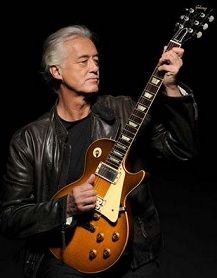 Jimmy Page mainly played Gibson Les Paul guitars, among them the 1959 Les Paul Standard nicknamed “Number One”. This was his main recording and live guitar from around the time he started working on the Led Zeppelin II album.
Jimmy Page mainly played Gibson Les Paul guitars, among them the 1959 Les Paul Standard nicknamed “Number One”. This was his main recording and live guitar from around the time he started working on the Led Zeppelin II album.
Aside from this guitar, he also famously used a 1958 Fender Telecaster nicknamed the “Dragon Tele”, and a black Danelectro DC-2 3021. Also, he’s famous for playing a double-neck guitar – a Gibson EDS-1275 which Gibson made for Jimmy Page so he could avoid having to switch guitars when playing “Stairway to Heaven” live.
When it comes to amps, Jimmy Page mostly used the Marshall Super Bass and Marshall Super Lead combination. Prior to this, or before 1971, he used a variety of different amps, including a Supro Coronado, a Vox UL4120, and a Hiwatt Custom 100.
As far as effects, in the early days, Jimmy Page used a Sola Sound Tonebender MK II which is one of the earliest fuzz pedals on the market. Aside from this he also used a wah pedal – he started out on a Vox Grey Wah, and eventually moved onto a Cry Baby wah which he continues to use to this day.
Jimmy Page’s 1959 Gibson Les Paul Standard “Number One”

This is Jimmy’s “Number One” guitar, a 1959 Gibson Les Paul Standard, which he bought in 1969 and used extensively on tour and in the studio with Led Zeppelin. Up until that point, he used a 1959 Fender Telecaster, but the Les Paul quickly became his favorite.
Page got his ’59 from Joe Walsh (James Gang; later Eagles) in April of 1969. Walsh did an interview with Guitar World magazine in which he shared the story about the exchange.
“As soon as I played the Les Paul I fell in love. Not that the Tele isn’t user friendly, but the Les Paul was gorgeous and easy to play. It just seemed like a good touring guitar. It’s more of a fight with the Telecaster but there are rewards.”
Mods
 This guitar had a few modifications done to it before it got into Page’s hands. The back of the neck was sanded down and shaved, making it very thin and easier to play – which was the thing that Page really liked about this guitar.
This guitar had a few modifications done to it before it got into Page’s hands. The back of the neck was sanded down and shaved, making it very thin and easier to play – which was the thing that Page really liked about this guitar.
One issue that was caused by this is that it’s still unknown what year model the guitar is. Due to the sanding of the neck, and the fact that none of the pickups are original, the serial number on the guitar is no longer present. But most people agree that Les Paul is probably from late 1959, or early 1960.
Tuners, Pickups
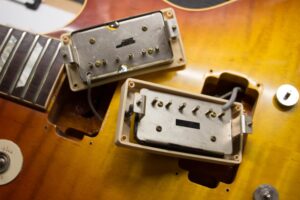 After Page got to play the guitar for a couple of gigs, he decided to swap the original Kluson tuners with gold-plated Grovers – since he was already familiar with them from his Les Paul Custom.
After Page got to play the guitar for a couple of gigs, he decided to swap the original Kluson tuners with gold-plated Grovers – since he was already familiar with them from his Les Paul Custom.
The electronics were modified as well. Pickups were changed numerous times. Originally, the guitar had the Seth Lover PAF pickups, but after a tour of Australia in 1972 the bridge pickup malfunctioned and was promptly replaced with a T-Top humbucker which remained there for the duration of Led Zeppelin. The T-Top was eventually replaced with a custom wound Seymour Duncan humbucker sometime in the 90s.
The neck pickup remained the same until the 2000’s when it was replaced by an original PAF humbucker from the 1960s.
Push/Pull out of Phase Switch
 Jimmy replaced one of the original knobs with a push-pull knob, which enabled him to reverse the phase of the pickups when this switch was activated.
Jimmy replaced one of the original knobs with a push-pull knob, which enabled him to reverse the phase of the pickups when this switch was activated.
As far as when exactly this happened, based on Jimmy’s statement below, it didn’t happen until he modded his Number Two Les Paul. This second Les Paul he got in 1973, and it was modded way later, in the early ’80s by Steve Hoyland. So obviously, it can be concluded that this out-of-phase sound was not featured on any of Led Zeppelin’s albums.
Jimmy Page’s 1959 Gibson Les Paul Standard “Number Two”
 This is Jimmy’s second 1959 Gibson Les Paul Standard – aptly dubbed “Number Two”. He bought it in England shortly after the 1973 U.S. tour, but he didn’t use it on stage until January 1975, when it was brought out on tour as a backup for Number One.
This is Jimmy’s second 1959 Gibson Les Paul Standard – aptly dubbed “Number Two”. He bought it in England shortly after the 1973 U.S. tour, but he didn’t use it on stage until January 1975, when it was brought out on tour as a backup for Number One.
Page usually had this guitar tuned to DADGAD and played “Kashmir” on it. It was sometimes also used for “Dazed and Confused” – when Jimmy played with a violin bow, “Moby Dick”, and “Over the Hills and Far Away”.
“I customized my number two Les Paul, which again is a real od vintage one. However, that gave any combination of all of these (pickups). But, it was a little fussy, because all of the knobs were push/pull, and I had little switches (below the pickguard).”
Mods
Jimmy wanted his Number Two to feel and sound as similar as possible to his Number One, so the neck was shaved and sanded down to replicate the neck profile on Number One, and the Kluson tuners were replaced with Grovers.
Furthermore, he began experimenting with different wirings in the 80s. His “Number Two” Les Paul was the first to succumb to these experiments, as Jimmy sent it off to Steve Hoyland for some pretty extensive mods.
Switches/wiring on Jimmy Page’s #2 Explained
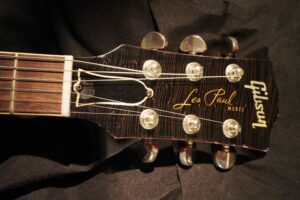
Steve replaced the original pots with four push/pull pots. The two tone pots would enable Jimmy to split the coils in the pickups – basically eliminating one of the coils in the humbuckers. The two volume pots enabled him to put coils of each of the pickups in parallel or in series with each other.
Aside from those four push/pull knobs, Steve also added two additional pushbutton switches tucked below the pickguard. One of these switches put the pickups in series with each other, and the other one would reverse the phase of the bridge pickup, resulting in the famous “Peter Green” out-of-phase tone.
As Jimmy explained himself, he eventually found all these mods rather unnecessary, and only ever really used the out-of-phase switch. For that reason, when he decided to mod his #1 Les Paul, he only added a single push/pull knob, which did exactly that.
Gibson’s Replica
In 2008 Gibson produced a limited run of Jimmy Page’s “Number Two” Les Paul replicas. Only 325 guitars were made, 25 of which were aged by Tom Murphy of Gibson Custom Shop and then played and hand-signed, and numbered by Jimmy Page personally. An additional 100 guitars were aged but not signed, and 200 were finished to Gibson’s VOS specs.


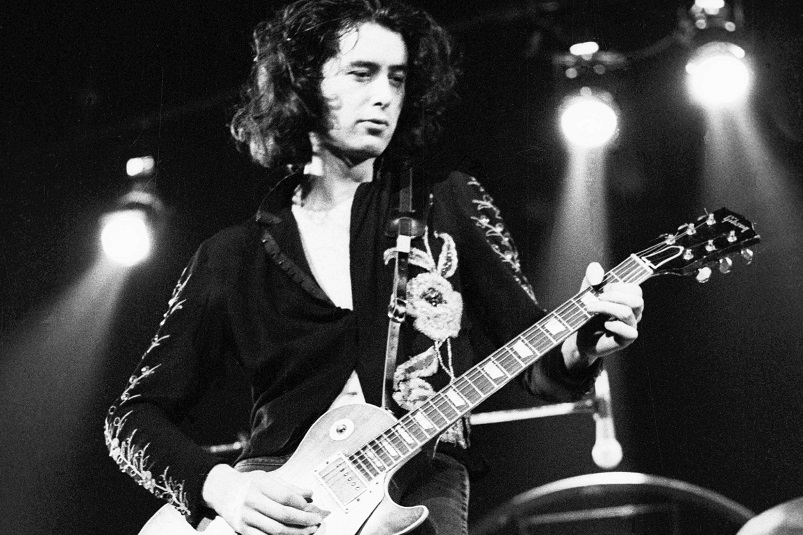

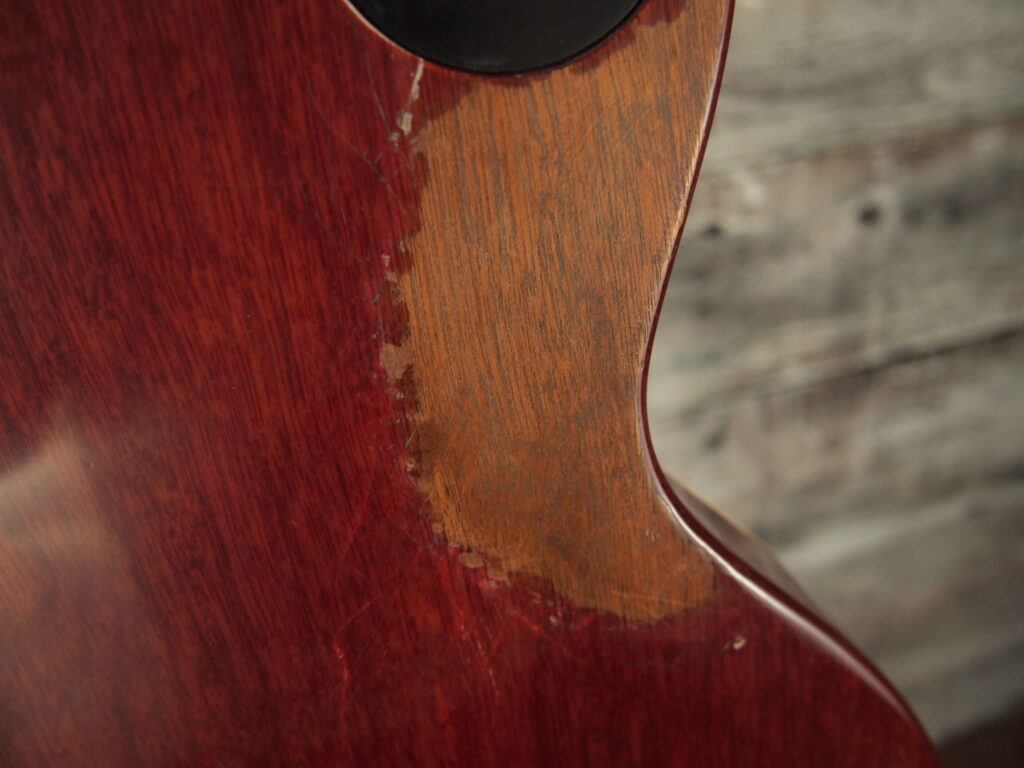
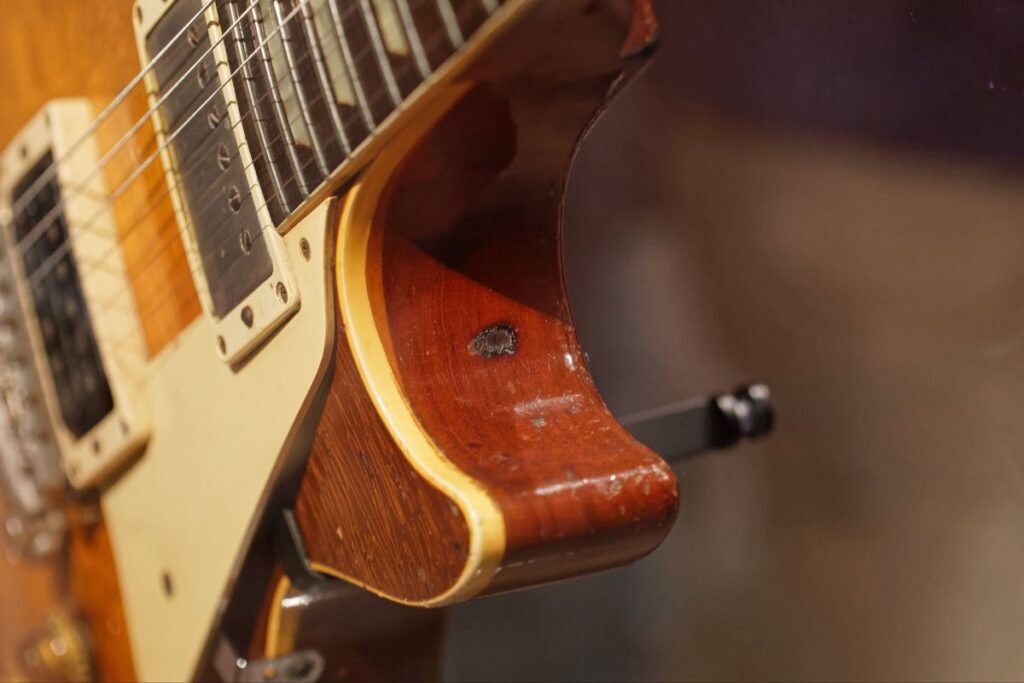

Stay connected